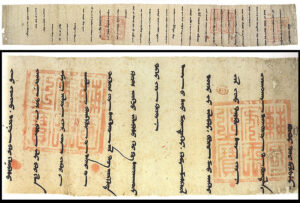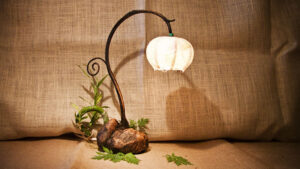Hanji (Korean: 한지/韓紙) is the traditional handmade paper from Korea. It is made from the inner bark of mulberry, a tree native to Korea and Hibiscus meninot, which helps suspend the individual fibers in water.
Traditional hanji is made in laminated sheets using the traditional we bal and dochim method. It revolves putting the sheet in water and pounding finished sheets to compact fibers and lessen ink bleed.
Historically, hanji paper is used for various reasons, but mostly for recording the country’s history during the Three Kingdoms period (57 BCE–668 CE). Despite being paper, Hanji is extremely tough, water-proofed and versatile. Because of its durability and availability, hanji is also used to cover floors, walls, ceilings, windows, and doors in traditional Korean houses.
Traditional Hangul on Hanji paper
Nowadays, with the rise of technology and globalization, Hanji soon fell into forgotten as people prefer the cheaper and less labour-intensive paper from China. However, recognized as a National Heritage and Treasure, efforts are being made to revive the Hanji industry. One of the most notable is the transformation of Hanji into elaborate artworks, that encompasses both 2D and 3D.
Hanji is also becoming more and more accessible internationally as people and artists recognize its advantages and beauty in producing quality artistics projects.
Modern Hanji lampshade

